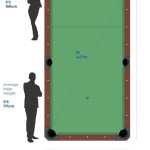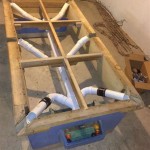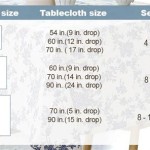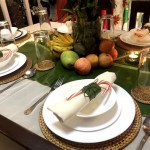Dining Table Cover Pads: Protection and Practicality for Your Dining Space
Dining table cover pads are essential accessories for preserving the beauty and extending the lifespan of dining tables. These pads, typically constructed from heat-resistant, durable materials, act as a protective barrier between the table surface and potential hazards, such as spills, scratches, dents, and extreme temperatures. The use of dining table cover pads offers a practical and cost-effective solution to maintain the aesthetic appeal and structural integrity of dining furniture.
The primary function of a dining table cover pad is protection. Dining tables, often significant investments, are vulnerable to daily wear and tear. Without adequate protection, the surface can easily become marred by hot dishes, condensation from drinks, sharp objects, and the abrasive action of plates and silverware. A quality dining table cover pad acts as a shock absorber, cushioning the table from impacts and preventing damage from heat and moisture. This is particularly crucial for tables constructed from delicate materials like wood, glass, or marble, which are susceptible to staining, warping, and cracking.
Beyond protection, dining table cover pads also contribute to improved functionality and convenience. They can create a smoother, more even surface for dining, preventing dishes and glasses from wobbling. The non-slip properties of many pads help to keep tableware in place, reducing the risk of accidental spills. Furthermore, cleaning and maintenance are significantly simplified with the use of a cover pad. Spills and messes can be easily wiped away without directly contacting the table surface, eliminating the need for intensive cleaning or specialized treatments.
The market offers a wide variety of dining table cover pads, available in different materials, sizes, shapes, and thicknesses. Selecting the appropriate pad requires careful consideration of the table's dimensions, material, and the user's specific needs and preferences. Understanding the various options available is crucial for making an informed decision and maximizing the benefits of using a dining table cover pad.
Key Point 1: Material Composition and Performance Characteristics
The material composition of a dining table cover pad significantly influences its performance characteristics, including heat resistance, durability, and aesthetic appeal. Common materials used include:
Vinyl: Vinyl pads are a popular choice due to their affordability, water resistance, and ease of cleaning. They are typically available in a variety of colors and textures, allowing users to match the pad to their existing décor. However, vinyl pads may not offer the highest level of heat resistance and can be prone to scratching or tearing with heavy use. The quality of the vinyl affects its durability and longevity. Lower-grade vinyl may become brittle and crack over time, while thicker, more durable vinyl options offer better resistance to wear and tear.
Polyester: Polyester pads provide a soft and cushioning layer of protection. They are generally more heat resistant than vinyl and offer a more refined appearance. Polyester pads often feature a quilted design or a decorative trim, adding a touch of elegance to the dining table. However, polyester can be more absorbent than vinyl, making it susceptible to staining if spills are not cleaned up promptly. Some polyester pads are treated with a water-repellent coating to improve their stain resistance.
Felt: Felt pads offer excellent scratch resistance and provide a soft, protective barrier for delicate table surfaces. They are typically used under tablecloths or other protective coverings to provide an extra layer of cushioning and prevent slippage. Felt pads are not waterproof and are not suitable for direct contact with spills. They are better suited for protecting the table from scratches and dents caused by tableware and decorative items.
Silicone: Silicone pads are known for their exceptional heat resistance, durability, and non-slip properties. They can withstand high temperatures without melting or deforming, making them ideal for protecting the table from hot dishes and cookware. Silicone pads are also waterproof and easy to clean, making them a practical choice for everyday use. However, silicone pads may be more expensive than other types of cover pads and may not be available in as many colors or textures.
Cork: Cork pads offer a natural and eco-friendly alternative to synthetic materials. They provide good heat resistance and cushioning, and their textured surface helps to prevent tableware from slipping. Cork is a renewable resource and is biodegradable, making it a sustainable choice for environmentally conscious consumers. However, cork pads can be susceptible to staining and water damage if not properly sealed or treated.
The choice of material depends on the user's specific needs and priorities. For those prioritizing affordability and water resistance, vinyl pads may be a suitable option. For those seeking heat resistance and a more refined appearance, polyester or silicone pads may be preferred. Felt pads are ideal for protecting delicate table surfaces from scratches, while and cork pads offer a sustainable and natural alternative.
Key Point 2: Sizing, Shaping, and Customization Options
Selecting the correct size and shape of a dining table cover pad is crucial for ensuring optimal protection and a seamless fit. Pads that are too small will not adequately protect the entire table surface, while pads that are too large can look awkward and detract from the table's appearance. Manufacturers typically offer a range of standard sizes and shapes to accommodate various dining table dimensions. Common shapes include rectangular, square, round, and oval.
Measuring the Table: The first step in selecting the correct size is to accurately measure the table's length, width, and diameter (for round tables). It is important to measure the table at its widest points to ensure that the pad will provide full coverage. For tables with leaves or extensions, measure the table with and without the leaves to determine the appropriate size for both configurations. It's best to add a slight margin of error (approximately 1-2 inches) to the measurements to ensure that the pad is slightly larger than the table surface. This allows for slight variations in manufacturing tolerances and provides a small overhang that can help to protect the table's edges.
Standard Sizes vs. Customization: While standard sizes are readily available, some dining tables may have unique dimensions or shapes that require a custom-made cover pad. Many manufacturers offer customization options, allowing users to specify the exact dimensions, shape, and material of their pad. Customization is particularly useful for tables with irregular shapes, such as those with curved edges or unique corner designs. It also allows users to choose specific materials or features that are not available in standard sizes.
Overhang Considerations: When selecting the size of the cover pad, consider the desired overhang. A slight overhang (approximately 1-2 inches) is often preferred, as it provides additional protection for the table's edges and prevents the pad from sliding around. However, excessive overhang can look unsightly and create a tripping hazard. The optimal overhang depends on the table's design and the user's personal preference. For glass-topped tables, a flush fit (no overhang) may be preferred to maintain a sleek and modern appearance.
Shape Matching: Matching the shape of the cover pad to the shape of the table is essential for a cohesive and visually appealing look. Rectangular tables should be paired with rectangular pads, square tables with square pads, and so on. For oval or rounded tables, it is important to select a pad that closely matches the table's curvature. Some manufacturers offer templates or guides to help users determine the correct shape for their table.
By carefully measuring the table and considering the available sizing, shaping, and customization options, users can select a dining table cover pad that provides optimal protection and complements the table's design.
Key Point 3: Cleaning and Maintenance Procedures
Proper cleaning and maintenance are crucial for preserving the lifespan and effectiveness of dining table cover pads. Regular cleaning removes spills, crumbs, and other debris that can stain or damage the pad over time. Following the manufacturer's instructions for cleaning and care is essential for avoiding damage to the pad and maintaining its protective properties.
General Cleaning Guidelines: The specific cleaning methods will vary depending on the material of the cover pad. However, some general guidelines apply to most types of pads. Regular wiping with a damp cloth or sponge is usually sufficient for removing minor spills and debris. For more stubborn stains or messes, a mild dish soap or cleaning solution can be used. It is important to avoid using harsh chemicals or abrasive cleaners, as these can damage the pad's surface or cause discoloration.
Material-Specific Cleaning Instructions:
Vinyl: Vinyl pads can be easily cleaned with a damp cloth and mild dish soap. For more stubborn stains, a vinyl cleaner or a mixture of water and vinegar can be used. Avoid using abrasive cleaners or scouring pads, as these can scratch the vinyl surface.
Polyester: Polyester pads can be spot-cleaned with a damp cloth and mild detergent. For larger spills or stains, the pad can be machine-washed on a gentle cycle with cold water. Tumble dry on low heat or hang to dry. Avoid using bleach or fabric softeners, as these can damage the polyester fibers.
Felt: Felt pads are not typically washable and should be spot-cleaned only. Use a damp cloth and mild detergent to remove stains. Avoid rubbing the stain vigorously, as this can damage the felt fibers. Allow the pad to air dry completely before using it again.
Silicone: Silicone pads are very easy to clean and can be wiped down with a damp cloth or washed in the dishwasher. They are resistant to stains and odors and do not require any special cleaning products.
Cork: Cork pads should be wiped down with a damp cloth and mild soap. Avoid soaking the pad in water, as this can cause it to warp or disintegrate. Allow the pad to air dry completely before using it again. Applying a sealant to the cork surface can help to protect it from stains and water damage.
Preventative Measures: In addition to regular cleaning, several preventative measures can help to extend the lifespan of a dining table cover pad. Using placemats and coasters can help to protect the pad from direct contact with hot dishes and condensation. Promptly wiping up spills can prevent stains from setting in. Avoiding the use of sharp objects on the pad can prevent scratches and tears. Storing the pad properly when not in use can help to prevent it from becoming creased or damaged. Rolling the pad up or laying it flat in a cool, dry place is recommended.
By following these cleaning and maintenance procedures, users can ensure that their dining table cover pad remains in good condition and continues to provide effective protection for their dining table for many years.

Superior Table Pad Co Inc Pads Dining Covers Top Protectors Round Protective

Table Saver Your Best Source For Pads Accessories

Vevor 100x45 Inch Clear Table Cover Protector 1 5mm Thick Desk Pads Plastic Tablecloth For Dining Room Com

Dining Room Table Top Protectors Custom Made Pads

Black Solid Custom Dining Table Pads Kitchen Pad Cover Protect Buffet Top Magnet

Pioneer Table Pad Company Where Can I Use Pads

Superior Table Pad Co Inc Pads Dining Covers Top Protectors Round Protective

Superior Table Pad Co Inc Pads Dining Covers Top Protectors Round Protective

Black Solid Custom Dining Table Pads Kitchen Pad Cover Protect Buffet Top Magnet

Vevor 72x46 Inch Clear Table Cover Protector 1 5mm Thick Desk Pads Plastic Tablecloth For Dining Room Com








